The Baltic States, St. Petersburg, and Moscow
September 26 - October 14, 2013
Part Four - St. Petersburg, Russia
Page Four - Savior on Spilled Blood and St. Isaac's Cathedral

Cathedral of the Resurrection on the Griboyedov Canal.
This Church was built on the site where Czar Alexander II was assassinated
in 1881 and was dedicated in his memory. The Cathedral is commonly
known as the Church of the Savior on Spilled Blood.
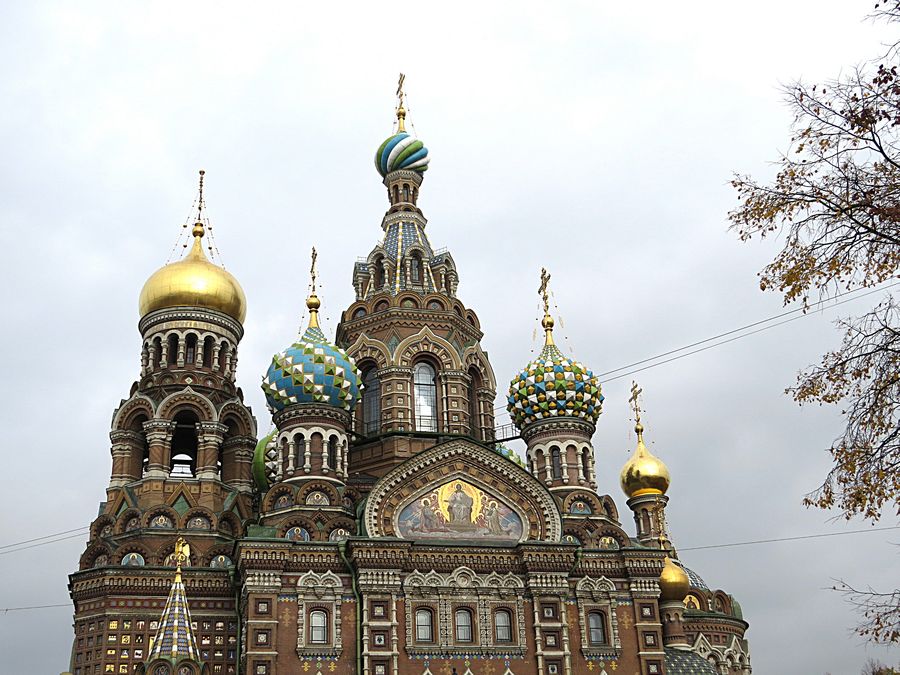
Memorial Museum - Savior on the Spilled Blood

Closeup views of sections of the Church


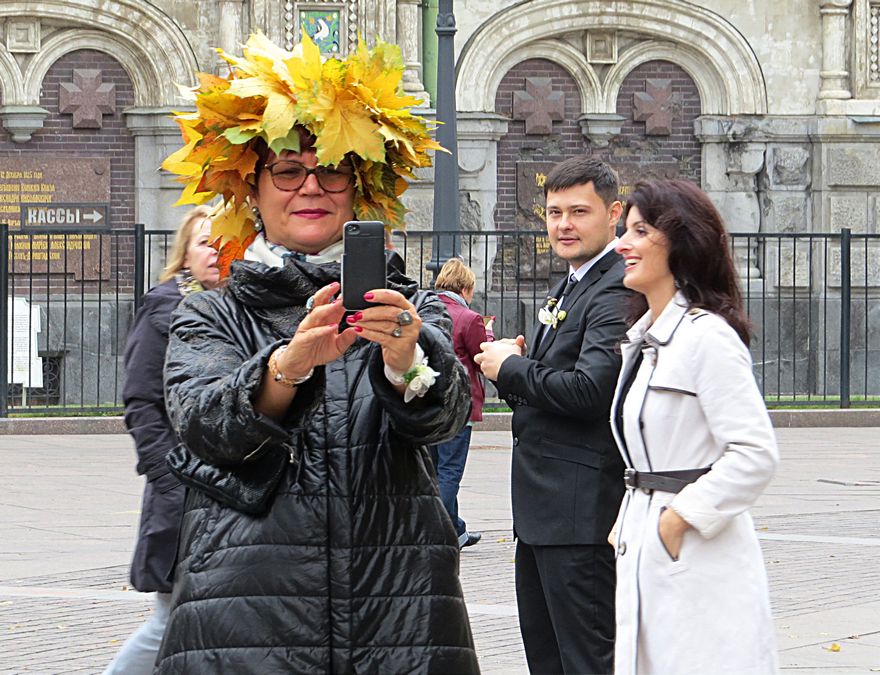
Russian woman taking a picture of herself in front of the cathedral in her
hat of fallen leaves. We saw kids picking up leaves as bouquets and also saw
at least one other adult with a leaf headdress.
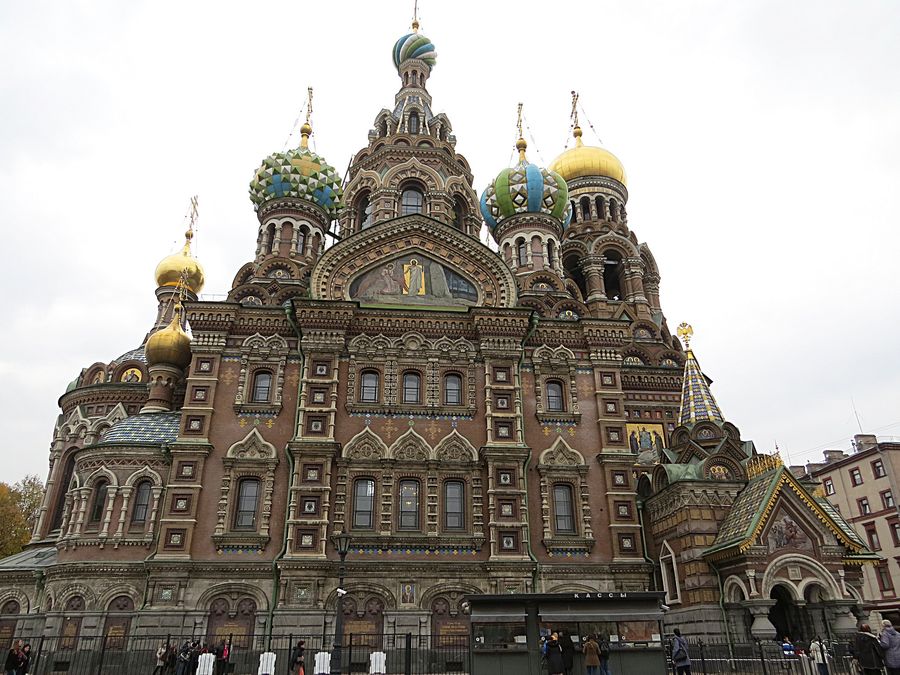
Other side of the Cathedral. Architecturally, the Cathedral differs from St.
Petersburg's other structures. The city's architecture is predominantly
Baroque and Neoclassical, but the Savior on Spilled Blood harks back to medieval
Russian architecture in the spirit of romantic nationalism. It intentionally
resembles the 17th-century Yaroslav churches and the famous St. Basil's
Cathedral in Moscow.

Pat at Savior on Spilled Blood Museum


The interior of the Cathedral of Savior on the Spilled Blood is decorated with
mosaic representations of Old and New Testament subjects.

It does not function as a full-time place of worship; it is a Museum of
Mosaics. Even before the Bolshevik Revolution, it never functioned as a
public place of worship; having been dedicated exclusively to the memory
of the assassinated czar. The only services were panikhidas (memorial
services). The Church/Museum is now one of the main tourist attractions
in St.
Petersburg.

Ceiling


In the aftermath of the Russian Revolution, the Cathedral was ransacked
and looted, badly damaging its interior. The Soviet government closed the
church in the early 1930s. During the Second World War when many people
were starving due to the Siege of Leningrad by Nazi German military forces,
the church was used as a temporary morgue for those who died in combat
and from starvation and illness. The church suffered significant damage.
After the war, it was used as a warehouse for vegetables, leading to the
sarcastic name of Savior on Potatoes.


Boy walking near the Savior on Spilled Blood Museum with
a handful of fall leaves.
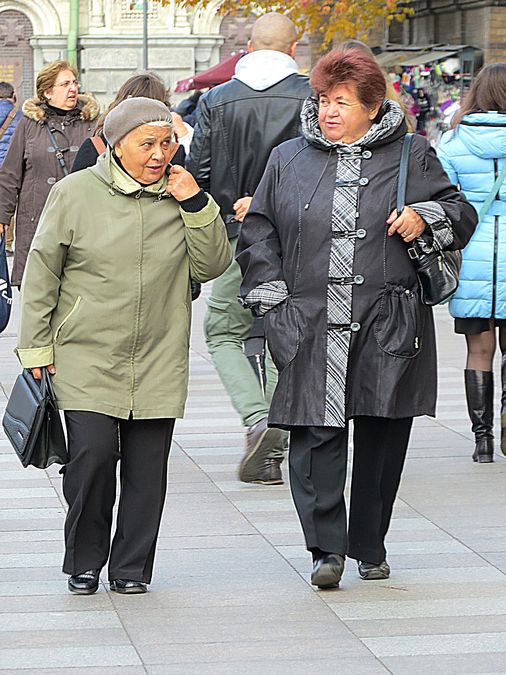
Two Russian women near the Museum

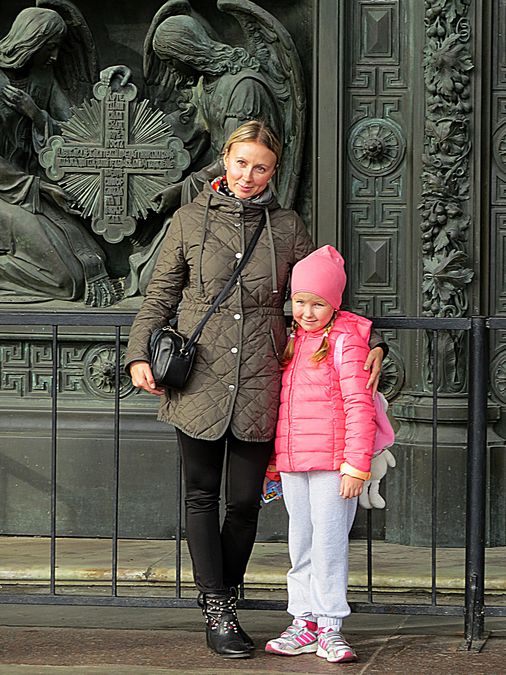
State Memorial Museum - St. Isaac's Cathedral
Saint Isaac's Cathedral is the largest Russian Orthodox cathedral in the
city. It is dedicated to Saint Isaac of Dalmatia, a patron saint of Peter the
Great, who had been born on the feast day of that saint. The cathedral's
main dome rises 333 ft and is plated with pure gold.
Note the bronze doors behind the mother and child,
called St Isaac's Gate.
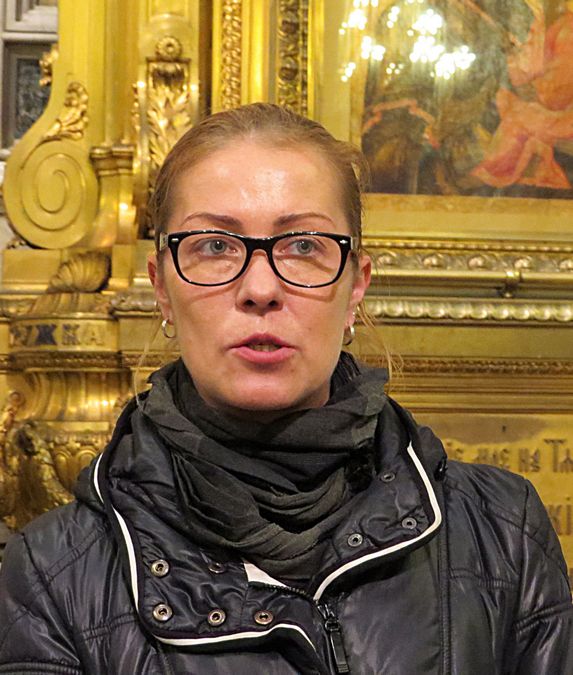
Our local tour guide in St. Petersburg inside St. Isaac's.

The cathedral took 40 years to construct from 1818 to 1858. Under the Soviet
government, the building was stripped of religious trappings. In 1931, it was
turned into the Museum of the History of Religion and Atheism (or the State
Anti-religious museum)
. In 1937, the
anti-religious museum was changed into
a memorial museum.
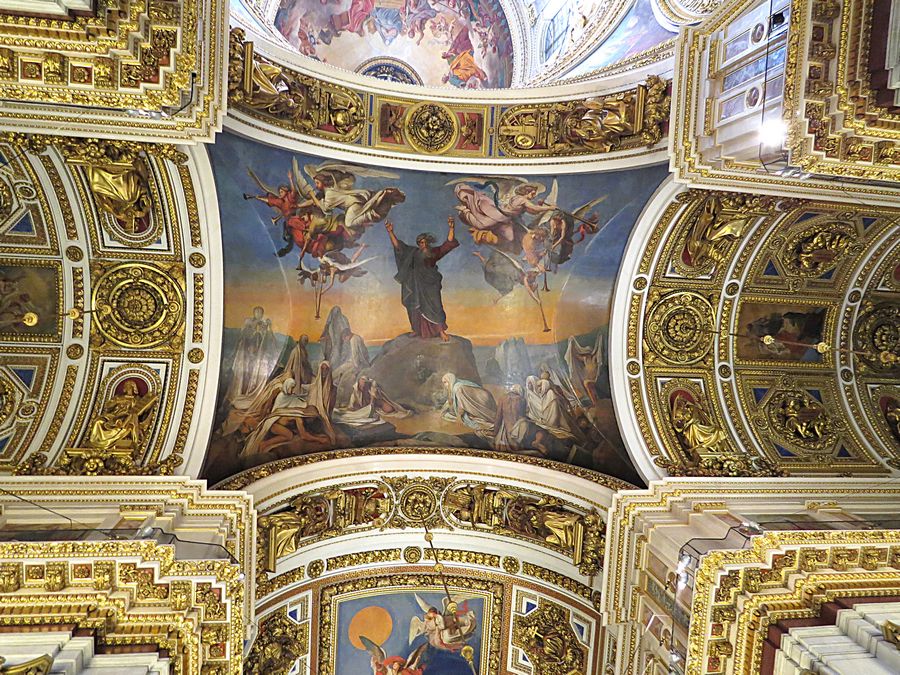

During World War II, the dome was painted over in gray to avoid attracting
attention from enemy aircraft. On its top, in the skylight, a geodesical
intersection point was placed, with the objective of aiding in the location
of enemy cannon. With the fall of communism, the museum was removed
and regular worship activity has resumed in the cathedral, but only in the
left-hand side chapel. The main body of the cathedral is used for services on
feast days only.
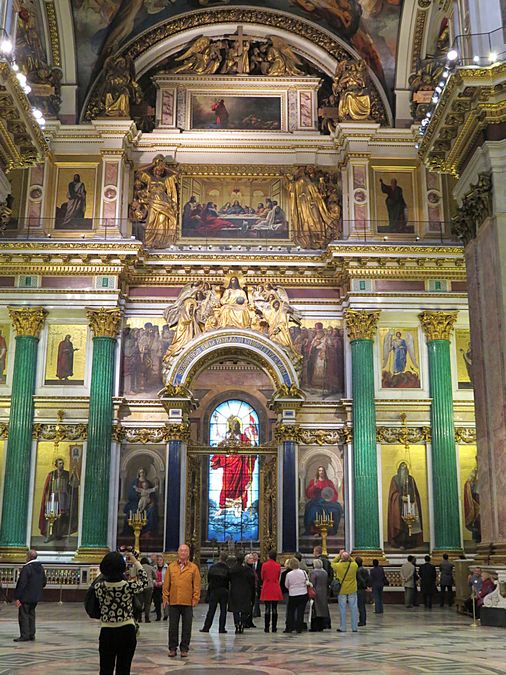


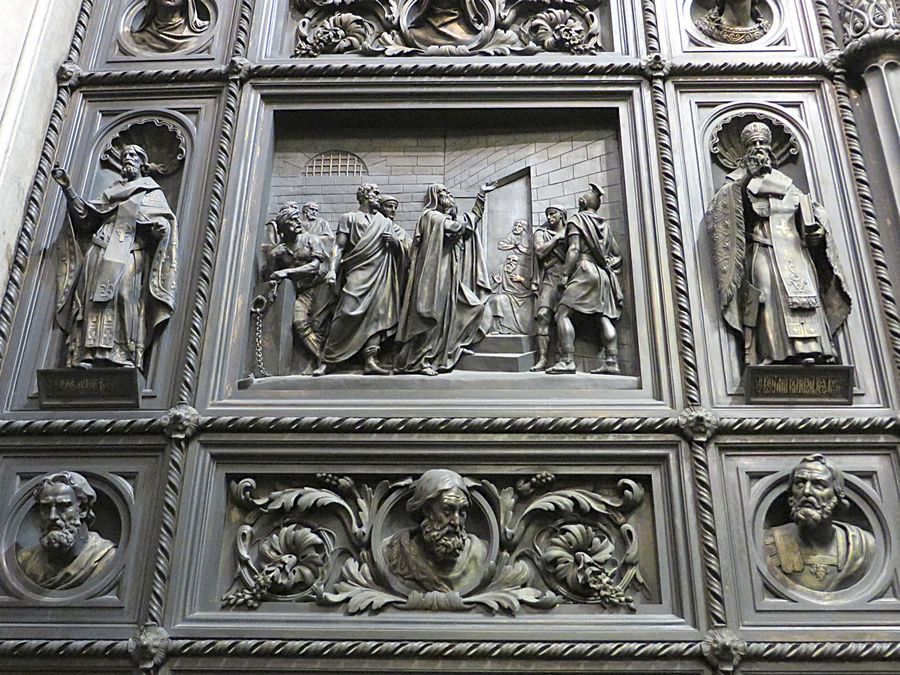
Part of an ornate bronze door inside St. Isaac's.
THE END - ST. PETERSBURG, RUSSIA
Link to Part Five - Moscow, Russia
Link to Part One - Lithuania
Link to Part Two - Latvia
Link to Part Three - Estonia
Link to Part Four, Page One - St. Petersburg
Pat's Home Page